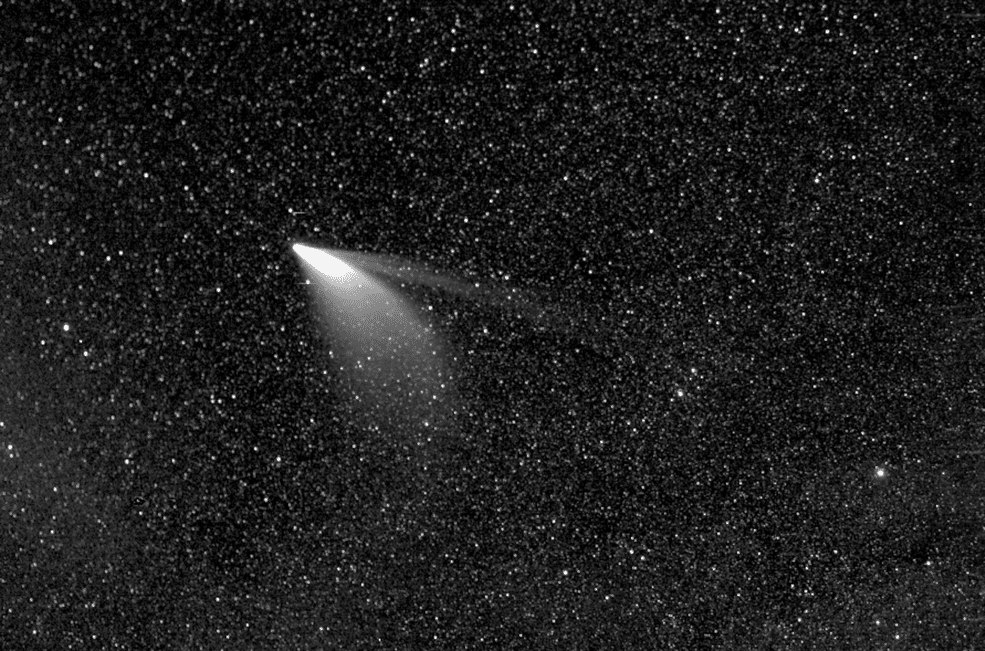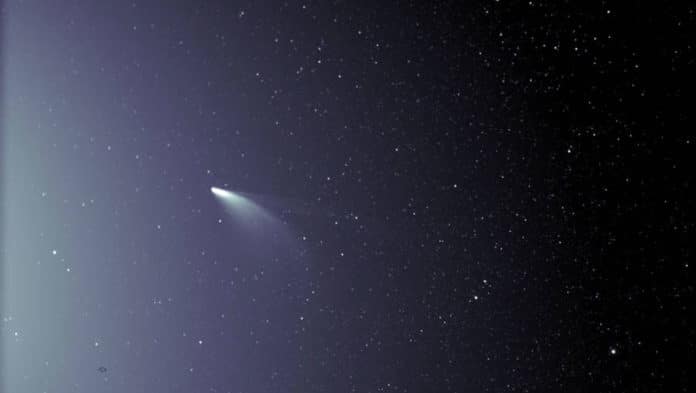On July 5, 2020, NASA’s Parker Solar Probe captured a unique view of comet NEOWISE. It captured an unmatched view of the comet’s twin tails when it was particularly active just after its closest approach to the Sun, called perihelion.
In the image, the twin tail of the comet is visible. Thanks to Parker Solar Probe‘s WISPR instrument, which has been processed to increase contrast and remove excess brightness from scattered sunlight, revealing more detail in the comet tails.
The lower tail of the comet appears broad and fuzzy. It is the dust tail of the comet that created when dust lifts off the surface of the comet’s nucleus and trails behind the comet in its orbit.
On the other hand, the upper tail of the comet is made from gases- ionized by losing electrons in the Sun’s intense light. The solar wind buffets these ionized gases and creates the ion tail that extends directly away from the Sun.

Originally discovered on March 27 by NASA‘s Near-Earth Object Wide-field Infrared Survey Explorer, or NEOWISE, The comet is also known as comet C/2020 F3 NEOWISE and nicknamed comet NEOWISE.
The image above is unprocessed data from Parker Solar Probe’s WISPR instrument. Scientists hope to use WISPR’s images to study the size of dust grains within the dust tail, as well as the rate at which the comet sheds dust.
